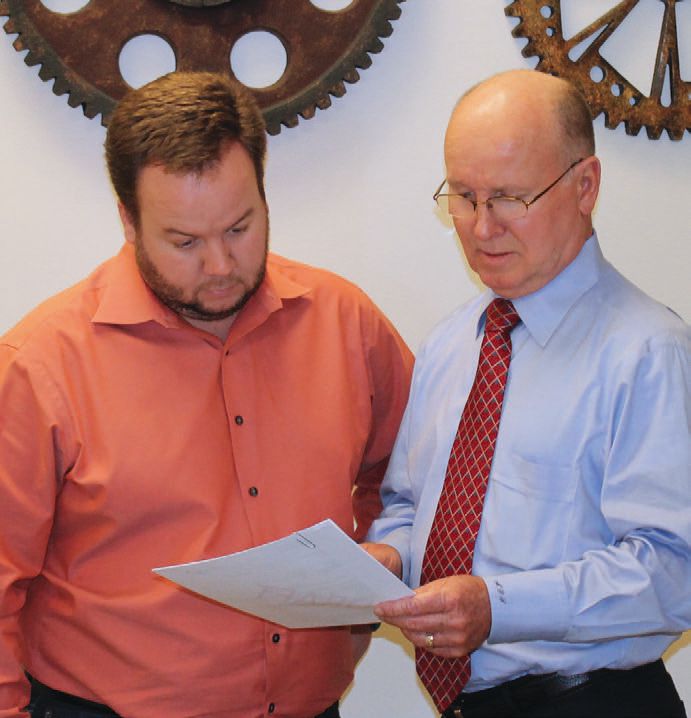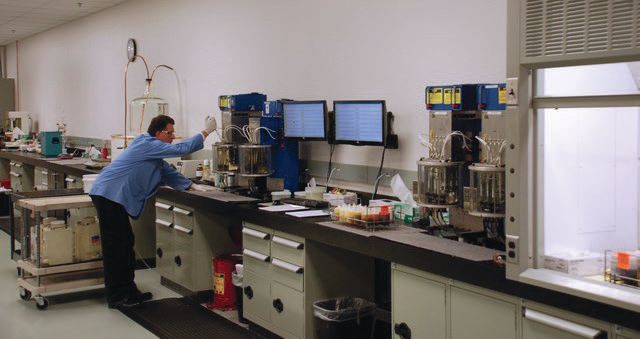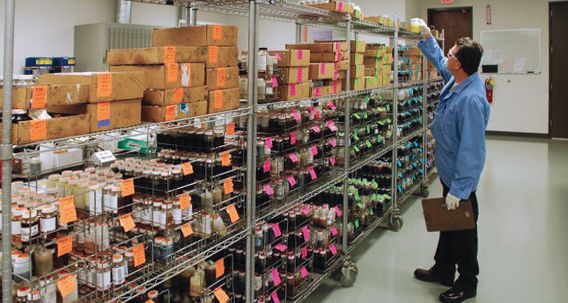20 Minutes With Michael Forgeron
Karl M. Phipps, Managing Editor | TLT 20 Minutes April 2014
The president and CEO of Analysts, Inc., discusses how future challenges in the oil analysis industry will impact end-users of commercial services.
MICHAEL FORGERON - The Quick File
Michael Forgeron is president and CEO of Los Angeles-based Analysts, Inc. Analysts operates eight laboratories in four countries, five of which are in the U.S., with the others in Mexico, Japan and China.
Michael received his bachelor’s degree in business administration with a minor in marketing from California State University-Dominguez Hills and joined Analysts, Inc., in 1969. He has held several positions in customer service, sales, laboratory management and corporate management.
In addition to his duties within the parent company of Analysts, Inc., Michael is also the representative director for Japan Analysts in Tokyo, Analysts Servicios Commerciales in Monterrey, Mexico, and KYB China Analysts (KCA) in Zhenjiang, China.
Michael has been a member of STLE, ASTM International and the Technology & Maintenance Council (TMC) and participated on numerous committees involved with testing, training, education and equipment maintenance practices.
Although Analysts, Inc., is primarily a testing organization, under Forgeron’s leadership and commitment to the improvement of the industry, the company developed LEM, a patented technology for the determination of soot in diesel engine oil, and quantitative spectrophotometric analysis (QSA) for varnish-related issues in various applications.
 Like father like son, Michael Forgeron, president and CEO of Analysts, Inc. (right) shares his expertise and knowledge in oil analysis and is passing it along to the next generation in his son, Cary (left), Analysts’ director of sales, who is also the youngest member to earn STLE’s Certified Lubrication Specialist™ certification. Michael has another son, Eric, who manages Analysts’ IT/IS operations. (Photos courtesy of Analysts, Inc.)
Like father like son, Michael Forgeron, president and CEO of Analysts, Inc. (right) shares his expertise and knowledge in oil analysis and is passing it along to the next generation in his son, Cary (left), Analysts’ director of sales, who is also the youngest member to earn STLE’s Certified Lubrication Specialist™ certification. Michael has another son, Eric, who manages Analysts’ IT/IS operations. (Photos courtesy of Analysts, Inc.)
TLT: How did you get involved in the industry?
Forgeron: My father, Edward Forgeron, founded Analysts, Inc., which was the first commercial laboratory to utilize spectrographic metals analysis as a means to identify and predict abnormal component wear. When I was younger, I was always interested in my father’s work and wanted to know what he did and why. I would sometimes travel with him to our first laboratory in Oakland, Calif., where he would explain the testing and how it impacted the customer’s business. There really was never a question in my mind that I would join the business. I formally joined Analysts in 1969, and it has been my passion and work ever since.
TLT: How has lubricant testing changed over your career?
Forgeron: As one should expect, the industry has changed tremendously over my 43 years of involvement. In the late 1960s when I started, the laboratories didn’t have the instrumentation or run as many different tests as we do today. Also, everything was performed manually; automation and computerization wasn’t part of our process. On the customer/user side, a lot of the work we did was looked at skeptically as people couldn’t understand or accept that we could accurately identify lube and component condition from the test results.
Today most of our lab processes are automated. Computerization has significantly improved the testing and allowed for direct integration into the laboratory LIMS database. Also, the level of customer awareness and knowledge about oil analysis continues to steadily improve.
As testing technology and instrumentation has improved, oil sample test regimes have evolved to become more industry and application specific. We can now test for specific areas of concern based upon the component type and use, which makes the amount of information provided and accuracy of the diagnostics much more valuable.
TLT: What kind of R&D is helping to promote new tests?
Forgeron: As an industry, the instrument suppliers are working on continual improvements to the existing technologies. Through the efforts of organizations such as ASTM, DIN (the German Institute for Standardization) and Japanese Industrial Standards (JIS), there is regular promotion and introduction of new technology, procedures and instrumentation.
Specifically within Analysts, Inc., we remain focused in a number of areas of continued development, including the determination of soot loading and effects in diesel engine applications, and through the company’s QSA (MPC) technology the creation of varnish-related contaminates in various applications.
 Labs must invest and develop in software that provides meaningful online access of oil analysis data.
TLT: What are the three biggest challenges facing the oil analysis industry today?
Labs must invest and develop in software that provides meaningful online access of oil analysis data.
TLT: What are the three biggest challenges facing the oil analysis industry today?
Forgeron: Not unlike most industries, I believe the three largest challenges the industry faces are all related to budgetary decision-making. We group the challenges as the “3 Cs”—Commoditization, Commitment and CapEx. Commoditization and commitment are user-driven, while capital expenditures are laboratory-driven.
Commoditization. Efforts toward commoditization of used oil analysis are based on desires to simply lower the price of sample testing. I don’t intend to infer that cost control is a bad objective. It is positive, necessary and should be a focus for all management. But unfortunately, perhaps, due to the law of unintended consequences, decisions as to what test program is implemented based solely on cost has resulted in many industrial application programs using less than adequate test slates for the machines being sampled. This has an impact of lost or reduced benefits and savings realized from the testing.
Commitment. Companies that utilize oil analysis should insure that they manage and control their programs within their plants and facilities. Leaders are needed to champion the effort to communicate within the organization, implement and manage the sampling activities and review and follow up on the reports associated with maintenance actions. Increases in workload and reductions in workforce are resulting in fewer program leaders.
Notifications to appropriate line personnel on critical condition reports still go out, and corrective actions to the conditions continue to be initiated. However, what we see lost is the more in-depth follow up and investigation at plant sites as to root cause analysis and further proactive changes to procedures that can reduce the instances of samples with critical severities.
CapEx. Laboratories must commit to increase the scope of services provided. This includes having the appropriate instrumentation and personnel to perform the optimal testing for the machines being sampled and to accurately diagnose the condition of the samples. Labs must also invest and develop in software that provides meaningful online access of oil analysis data. Software such as our Lube Oil Analysis Management System (LOAMS) program must allow the users to efficiently and correctly manage their programs, with or without single appointed leaders.
Knowing that manpower levels and available time are reduced at the user level, service laboratories need to step up and fill the gaps so that benefits of the sampling activities are fully realized for the customers.
TLT: What are the three biggest myths about oil analysis?
Forgeron: People seem to forever be looking for the silver bullet, the one test or one system that will resolve all your problems and tell you everything you need to know about your sample. Lubricant technology is very complex, and the engineering that is required to manufacture today’s machinery is very advanced. While there are similarities in various lubricants and equipment types, there are always going to be differences as well. Sampling that applies to the specifics of the lube and component will always be better than single-source technology.
Also, a surprisingly common misconception that we deal with daily is the belief that new oil is clean oil. Too many users continue to ignore the published literature, prevalent warnings and the training that details possibilities of contaminants, especially particulates and moisture, that can be present with new oil.
Last, the idea that a single sample can be as effective as continuous sampling and trend analysis remains in place in some segments of the market. When there is a glaring problem, this is correct. Free water, completely out of grade viscosity or extremely high values of wear metals can easily be identified as anomalies. Unfortunately, when these issues are present, much more damage has occurred versus when the problems are monitored through regular sampling and trend analysis and identified in their early stages.
 Today roughly 80 percent of samples submitted for processing are considered as normal condition.
TLT: What is the biggest change in oil analysis over the past decade?
Today roughly 80 percent of samples submitted for processing are considered as normal condition.
TLT: What is the biggest change in oil analysis over the past decade?
Forgeron: I believe the biggest change is what and how laboratories deliver information to the users. For leading labs, testing has expanded in what legacy markets require, as well as to meet the new markets and machines and equipment that have been introduced to industry in general. Examples of this are in power generation including wind turbine and gas-fired co-generation applications.
The integration and use of computing power has significantly improved our industry. Test instrument manufacturers have leveraged this power to create new technologies that improved processing times, detection levels, accuracy and scope constituents that can be identified and measured. Instruments are now interfaced directly to laboratory LIMS systems, which reduce overall processing time and clerical errors of misreading results or transposition.
A high majority of data delivery is now done electronically via email, text messaging and online access. Online access programming such as cloud-based LOAMS provide tremendous power to users and managers of sampling programs. Trending, graphing, unique data mining, equipment management, sample labeling/barcoding and enhanced communication with the lab or co-workers are all available online today.
TLT: What will be the biggest change in oil analysis in the coming decade?
Forgeron: The coming decade should bring a large twofold change to the industry. First, on-site testing, whether by handheld units or sensors, will eventually be developed to successfully monitor certain oil properties and common contamination. This will result in a different mix of samples being submitted to laboratories. Today roughly 80 percent of samples submitted for processing are considered as normal condition. In the future, we should see a drop in this percentage with a corresponding increase in samples with abnormal conditions test results.
As sensors begin to penetrate the market, many of today’s labs will need to adapt testing protocols and expand their capabilities to run more sophisticated tests. They will need to concentrate their services more on root cause analysis and recommended corrective actions. If they don’t have it today, they will also need to develop expertise in order to take a more active role in assisting their client base in troubleshooting of equipment problems. A commitment to large and ongoing capital investment will be required to maintain the needed instrumentation, associated software and personnel necessary to run the tests and evaluate the results.
Second, as a result of the shift in needed instrumentation and expertise, we can expect a consolidation in the industry. Many smaller labs will not be capable of making the needed investments or will not have the required expertise to assist their customers with the in-depth testing, which will create a change in the type and number of laboratories providing the future oil analysis services.
TLT: What role will sensor technology play in oil analysis?
Forgeron: Sensors will eventually have an inclusive role in oil analysis. Whenever specific properties of an oil sample can be monitored on a real-time basis, the value of oil analysis increases. Sensors will be an enhancement to the industry.
By identifying the normal condition machines and components, more time and involvement can be spent on the equipment that needs the attention. Sensors can replace the labor required to sample normal condition equipment. They will allow monitoring of more units, particularly those units that are in remote and hard to access locations.
Additionally, we at Analysts are working on technology that will enable sensors to transmit required operating data to the laboratory, which will improve the amount and accuracy of the data received, reduce the labor needed to provide the information and allow bi-directional information back to the machine or facility from the laboratory, all in real-time.
TLT: How does oil analysis relate with other condition-based maintenance technologies?
Forgeron: Oil analysis complements other condition monitoring-based technologies such as vibration and thermography. It identifies lube and some wear conditions that the other disciplines cannot. Conversely, those disciplines identify areas oil analysis cannot. Oil analysis typically identifies issues at earlier stages and at a fraction of the cost than other technologies.
TLT: How would you sum up the oil analysis industry?
Forgeron: Oil analysis is a technical service. Its value should be determined by the return on the investment of the program, not the cost of the samples. The benefits received and ROI of the program is derived from reduced maintenance costs, increased machine uptime and productivity and longer asset life cycles. While it is a mature industry, it continues to evolve and improve—which creates value. That is a good thing.
I am proud of our work in oil analysis and proud of my career in the industry. We’ve come a very long way from the early days and we have an exciting road of continued advancement to follow into the future.
You can reach Michael at mforgeron@analystsinc.com.